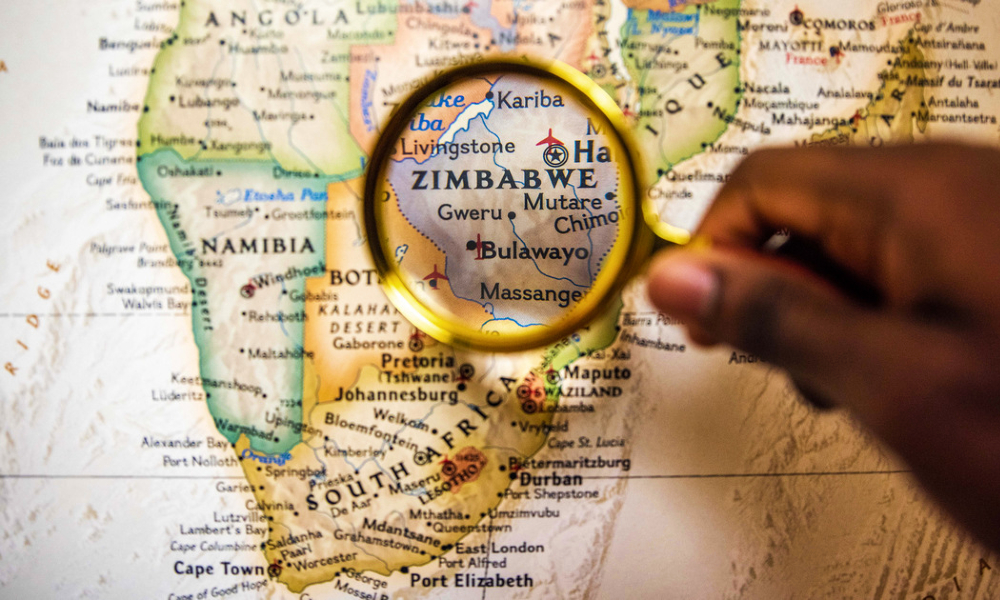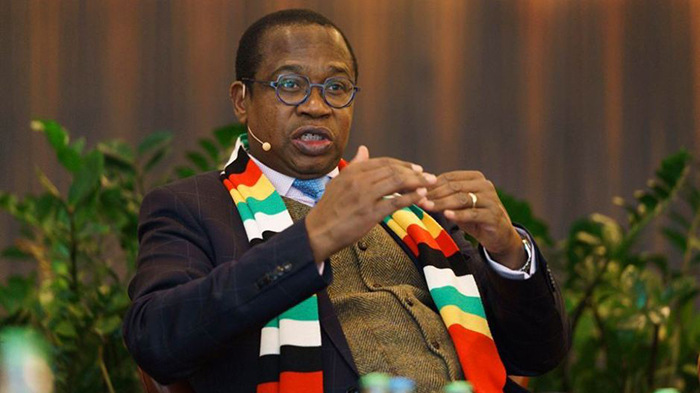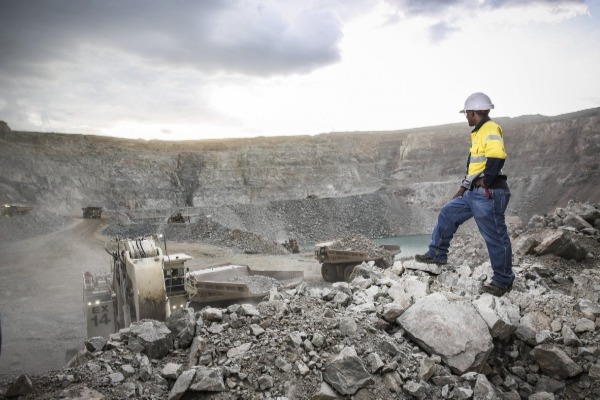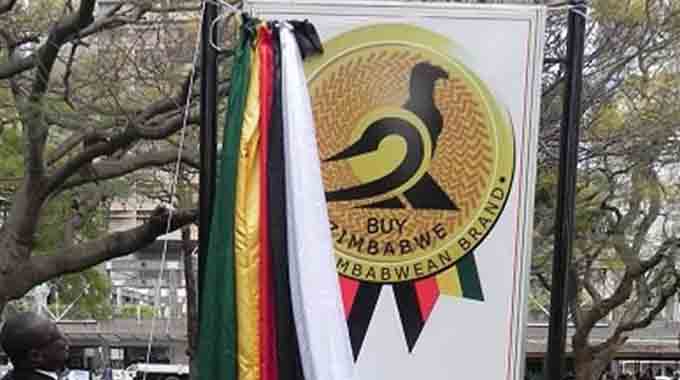Commentary: Banking in Zimbabwe, Earlier Days
This is the first episode of a two-part series
HARARE – Banking has generally been tightly organised in Zimbabwe with licences outside three fairly brief periods hard to obtain. Two banks were licenced by the British South Africa Company in the early colonial era, three were licenced in the 1950s and early 1960s, just one soon after independence, and then a whole batch of around 10 during a fairly brief spurt of deregulation in the late 1990s and early 2000s, some of which ended up as Zimbabwe’s first bank failures and a return to tight control of licencing.
At independence there were three commercial banks with chains of branches in all cities and major towns plus a fourth commercial bank with just two branches in Harare. These were backed by a larger pack of merchant banks and acceptance houses, all single branch. Then there were three building societies which between them financed most home-ownership purchases, and finally the Post Office Savings Bank that had the largest branch network and was unique in allowing savers to make deposits and withdrawals, but with very limited sums, at any branch without hassles or notice.
What is now Standard Chartered was the start-up bank as the result of a deal between this Cape Town bank with a British head office and Cecil Rhodes and his British South Africa Company offering special privileges, such as a temporary monopoly, a longer-term gold buying monopoly, and all administration business.
Standard Bank of British South Africa, a Cape Town bank that had survived a meltdown in the Cape Colony banking sector, sent John Boyne and a cashier north by rail and stage to Fort Salisbury to offer the BSA Company administration and the little over 1 000 white settlers basic banking, which included the chance to cash BSA Company cheques and getting a reasonable amount of currency in circulation.
Boyne and his cashier, with their bag of cash, were assigned one of the four offices in Cecil House, on the north east corner of Sam Nujoma (Second) Street and Ahmed ben Bella (Central) Avenue then still owned by de Beers, and so another Rhodes connection, although they pulled out the following year. They opened shop, even if the cashier had to sleep at night on the counter, Zimbabwe had its first bank.
A second branch was set up in a bell tent in Bulawayo after the conquest of Matabeleland. By 1894 Standard Bank of British South Africa had built a little one storey building along Samora Machel Avenue between Patrice Lumumba and Simon Muzenda Streets (Third and Fourth Streets) and had bought next to it the north east corner stands at Samora Machel Avenue and Patrice Lumumba (Third) Street to build a far more grandiose two-storey building finished in 1896 (now Mashonganyika Building with the Constitutional Court sitting in a much modified banking hall). At the back, was the assay office, to fulfil the gold buying monopoly. This is still there but now incredibly modified.
The administration rather fancied Mashonganyika and in any case business custom was growing fast and was quite far away from the businesses so in 1911 Standard Chartered had built a far larger building at the bottom end of First Street Mall along Robert Mugabe Road (with the new assay office at the back) and sold off Mashonganyika to the BSA company administration, which doubled it in size in the 1920s. Already a decent branch building had been built in Bulawayo with branches in Mutare and Gweru and the network just grew.
Meanwhile, in the early 1900s, the African Banking Corporation, another Cape bank, wanted to move in. Fortuitously at round about the same time two local men of Greek origin, Gerrassime Cambitsi and Panaghi Vassilatos, had acquired a stand on the corner of Robert Mugabe Road (then Manica Road) and Mayor Urimbo Terrace (then Inez Terrace) from the bankrupt French South Africa Development Company and were looking at developing it as an investment.
They connected with the African Banking Corporation who agreed to be the anchor tenant in the Union Building, which is still there, and a banking hall and strong room were built on the corner, with shops down Inez Terrace for other tenants, and the bank also rented some of the offices on the first floor, which included another strong room, and a bedroom for a member of the banking staff.
But Barclays Bank, an English bank founded by a pair of Quaker brothers that had been growing by buying out small country banks across England, decided to spread its wings and started buying in South Africa, with the African Banking Corporation being one of the first purchases in 1912, and along with that buyout Barclays acquired the Harare branch. It expanded its network as Zimbabwe’s second bank
Barclays kept buying and when it bought a pile of larger banks in British territories in the 1920s it set up a large subsidiary, Barclays Bank DCO (Dominions, Colonies and Overseas) and had a brand name that would last decades. By 1928 there were 10 Zimbabwean branches and local control committee was set up by the regional head office in South Africa and was for some decades headquartered in Bulawayo.
It moved back to Harare after Federation and was in the end bought out by First Capital of Malawi, but is still there with its large branch network.
And that was that. Zimbabwe was a two-bank country with Standard and Barclays through the First World War, the resulting boom, the Great Depression, the Second World War and its aftermath.
Post WWII banking
The 1950s saw the next expansion, with eventually three new licences for commercial banking. In 1951 the Netherlands Bank of South Africa opened a branch (pic below) and started growing a network, slowly. By 1967 this was large enough, and with the recent UDI there were other reasons for a bit of hands off controls even with South Africa refusing to impose UN sanctions but also refusing formal recognition of UDI, for splitting off the Rhodesia operations first into the Netherlands Bank of Rhodesia with the South African bank remaining the major shareholder, and then renaming this the Rhodesia Banking Corporation Limited in 1972.
After independence it was sold largely to the Government and became Zimbabwe Banking Corporation and then ZB Bank.
From the late 1960s there were three major commercial banks with branch networks and that was the situation at independence.
But two British banks heavily involved in India and the Middle East dipped their toes into the water. In 1958 Ottoman Bank, a British bank that had achieved great power in the Ottoman Empire before the First World War but had become an ordinary bank after the war with the establishment of the Turkish Republic and largely split between its French shareholders and British shareholders. The British group moved into the Gulf and India and down the East Africa coast and in 1958 wanted an outpost in the Federation of Rhodesia and Nyasaland, and opened a branch in an imposing building in Nelson Mandela Avenue. There was no branch network, just this one branch coping with the trade and the like to other Ottoman Bank customers.
In 1964, Grindlays Bank arrived. This was a long established British overseas bank in India, serving the British-officered Indian Army and British administration and even buying out other banks in the “jewel of the crown”. Indian independence ended that cosy business niche and Grindlays started expanding south.
And it decided to open a Harare branch, in another imposing building in Samora Machel Avenue. UDI derailed any plans for expansion. The three main commercial banks were controlled from semi-independent headquarters in South Africa but Ottoman and Grindlays were British and had to hunker down. But in 1968 Grindlays merged with Ottoman British interests, and later bought out the French interests, and as a result now had two little acknowledged branches in rebel Rhodesia a couple of blocks apart.
The local management, with obviously some knowledge in London headquarters, went for the luxury market, seeking higher-end net worth customers and offering queue free banking in their two rather grand buildings. It was a bit of a status symbol for richer residents of Harare to have a Grindlays account, although their larger businesses were probably with Standard or Barclays, or at a push Rhobank to take advantage of branch networks, but someone like a top professional could have office accounts at Grindlays.
Post-independence banking
Grindlays changed somewhat after independence, as a British bank could now be more open and adventurous, and started a branch network. The Grindlays network was sold to ANZ, an Australian Bank in 1985, being rebranded ANZ Gridlays, and when the Australians got cold feet in Africa the African operations were sold to Standard Bank of South Africa in 1992.
Standard Bank, who had opened the first bank in Southern Rhodesia, had split during apartheid into two Standard Banks, the bigger being the Standard Bank of South Africa and the smaller all the rest of the branches, almost all in the rest of Africa. The international and British-based bank then amalgamated with Chartered Bank, a very similar operation centred in Asia to form Standard Chartered, the name it has to this day.
But after democracy came to South Africa the Standard Bank there could expand into Africa, and it did so by buying out the Grindlays operations across the continent. But it could not use the name Standard, Standard Chartered had reserved the name, so was known outside its South African base as Stanbic. But in Zimbabwe the operations and licence date back to Ottoman in 1958.
Soon after independence Bank of Credit and Commerce International made a serious pitch to the Zimbabwean authorities and was granted a licence as the fifth commercial bank. Fortunately, when the BCCI global meltdown occurred the semi-isolated Zimbabwean operation remained viable and the Government in an emergency measure was able to buy it out in 1992, renaming it Commercial Bank of Zimbabwe, CBZ, and then bringing in new shareholders although it has maintained close Government ties.
That was the position, five commercial banks, until the sudden licence regime opening of the late 1990s. – finx








